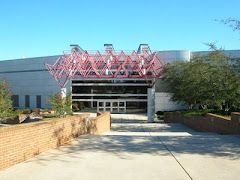A library catalog is a register of all bibliographic items found in a library or group of libraries, such as a network of libraries at several locations. A bibliographic item can be any information entity (e.g., books, computer files, graphics,
realia, cartographic materials, etc.) that is considered library material (e.g., a single novel in an anthology), or a group of library materials (e.g., a trilogy), or linked from the catalog (e.g., a webpage) as far as it is relevant to the catalog and to the users (patrons) of the library.
The card catalog was a familiar sight to library users for generations, but it has been effectively replaced by the online public access catalog (OPAC). Some still refer to the online catalog as a "card catalog". Some libraries with OPAC access still have card catalogs on site, but these are now strictly a secondary resource and are seldom updated. Many of the libraries that have retained their physical card catalog post a sign advising the last year that the card catalog was updated. Some libraries have eliminated their card catalog in favor of the OPAC for the purpose of saving space for other use, such as additional shelving.
Charles Ammi Cutter made the first explicit statement regarding the objectives of a bibliographic system in his Rules for a Printed Dictionary Catalog in 1876. According to Cutter, those objectives were
1. To enable a person to find a book of which either (Identifying objective)
- the author
- the title
- the subject
- the category
Is known
2. To show what the library has (Collocating objective)
- by a given author
- on a given subject
- in a given kind of literature
3. To assist in the choice of a book (Evaluating objective)
- as to its edition (bibliographically)
- as to its character (literary or topical)
These objectives can still be recognized in more modern definitions formulated throughout the 20th century. 1960/61 Cutter's objectives were revised by Lubetzky and the Conference on Cataloging Principles (CCP) in Paris. The latest attempt to describe a library catalog's goals and functions was made in 1998 with Functional Requirements for Bibliographic Records (FRBR) which defines four user tasks: find, identify, select, and obtain.
A catalog also serves as an
inventory or bookkeeping of what's in the library. If an item (a book) is not found in the catalog, the user doesn't have to search the shelves but can continue her search at another library.
For our Library Guides please click this link for more Cataloging:
Mel Chandler,
Guides
Library Book Collections by
Mel Chandler - Last Updated Dec 3, 2012
A listing of the TCTC Library Book Collections







